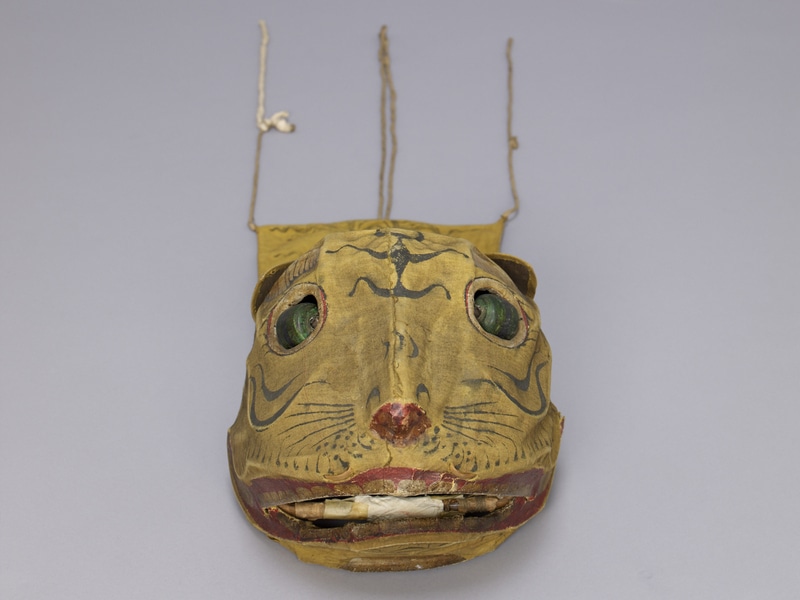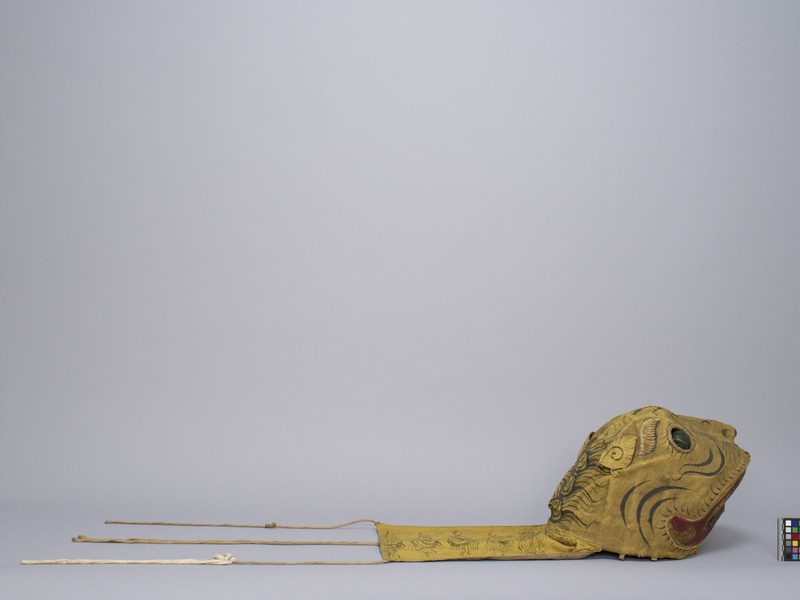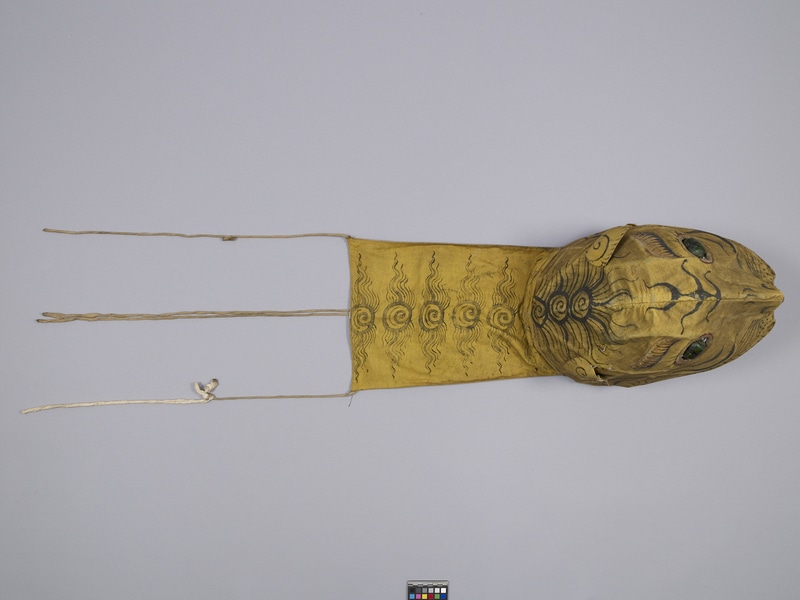Tiger Mask Item Number: 2967/52 from the MOA: University of British Columbia



Description
Cantonese opera tiger mask, to be worn with costume 2967/53. Mask has a bamboo under-structure, covered with coarse burlap and topped by yellow hemp. The mask covers the wearer’s face and head and has a long flap down the back to cover the neck. Several long strings connect the neck flap to the mask, as well as it being sewn on at the rear base of the mask. The face has an open mouth painted red, a small red nose, and holes for eyes with a large green wooden bead attached with wire. Small ears are sewn to the head behind the eyes. Stamped onto the fabric on the back of the head and the neck cover are a series of circles with radiating rays. The face is emphasized with eyebrows, whiskers, and stripes.
History Of Use
Tiger costume used in an act to exorcise a new stage.
Iconographic Meaning
Mask part of a costume used for the drama: Ji Baihu (White Tiger Worship). Designed to harness the power of the fearsome White Tiger deity, performed to tame, expel or ward off evil spirits and negative energies, reserved for sites that require purification, such as a new theatre or a performance site that is being used for the first time by a touring troupe. As the “king of beasts,” the White Tiger rules over the underworld where demons, ghosts, and evil spirits reside. Associated with the yin principle, their domain encompasses the realm of the feminine, darkness, water, mystery, danger, the ancestral spirits, and death. This drama has no dialogue and is performed by two martial performers for the deities: White Tiger and Xuan Wu (the Dark Warrior).
Item History
- Made in China between 1910 and 1920
- Owned by Jin Wah Sing Musical Association before August 29, 2012
- Received from Jin Wah Sing Musical Association (Donor) on August 29, 2012
What
- Name
- Tiger Mask
- Identification Number
- 2967/52
- Type of Item
- mask
- Material
- hemp fibre, bamboo grass, wood, paper, ink and metal
- Overall
- height 29.5 cm, width 31.5 cm, depth 73.5 cm
Who
- Culture
- Chinese: Cantonese
- Previous Owner
- Jin Wah Sing Musical Association
- Received from
- Jin Wah Sing Musical Association (Donor)
Where
- Holding Institution
- MOA: University of British Columbia
- Made in
- China
When
- Creation Date
- between 1910 and 1920
- Ownership Date
- before August 29, 2012
- Acquisition Date
- on August 29, 2012
Other
- Item Classes
- textiles
- Condition
- good
- Accession Number
- 2967/0052